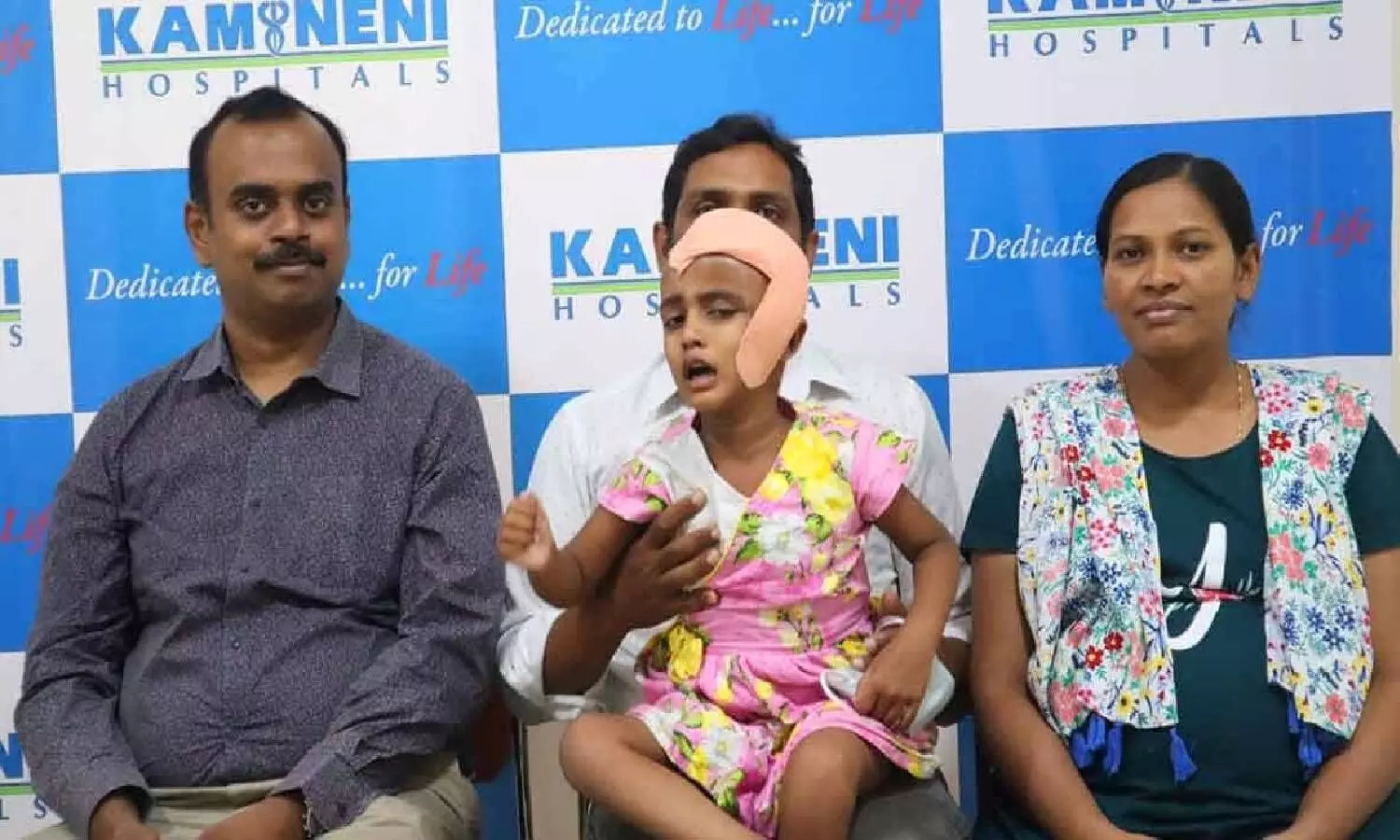Rare surgery performed on 3YO for unusual laughter disorder in LB Nagar
Gelastic seizures usually occur during childhood, even among newborns, and are manifested by frequent attacks of inappropriate laughter resulting from seizures.
By Newsmeter Network
Hyderabad: A rare surgery was performed on a three-year-old child suffering from Gelastic seizures in a city hospital. The child was taken to Kamineni Hospitals in LB Nagar by her parents with a developmental disorder, unusual episodes of laughter called Gelastic seizures.
Gelastic seizures usually occur during childhood, even among newborns, and are manifested by frequent attacks of inappropriate laughter resulting from seizures. Studies show that Gelastic seizures are very rare and only one in every 2,00,000 children suffers from this abnormality, a hospital statement here said on Monday.
Little Grace used to laugh all of a sudden for no obvious reason, situation, or cause. When she was evaluated, she was diagnosed with an abnormal laugh disorder, Gelastic seizure. The child had a sub-centimeter lesion in the hypothalamus, most probably hypothalamic hamartoma. She was put on anti-seizure medications.
The girl's parents did the rounds of various hospitals but all proved futile. Six months ago the child used to get seizures once a month and it lasted for 10 seconds but the frequency of seizures increased to five-six times a day and the duration of the seizures also increased to one minute. The child also developed a squint in the left eye.
She was evaluated by a team of doctors – neurosurgeon, neuro physician, paediatricians, and endocrinologists. A high-end 3T MRI showed a large lesion extending from the hypothalamus (which is a part of the brain that houses several small nuclei that undertake a variety of functions) with compression on major vessels and nerves (especially to vision and extraocular movements).
Endocrinologists diagnosed the child as having reached puberty (corresponding to eight years of age) because neurons in the tumour function as a heterotopic hormone (GnRH) pulse generator.
"The child's parents were explained about the condition, rarity of the disease, requirement of surgery, and the risk involved. They were also informed about other modalities of treatment. After thorough counselling, the child was taken for craniotomy and excision of tumour using navigation under general anaesthesia. Having navigation in our armamentarium helped us to perform the surgery in a minimally invasive manner without disturbing major structures especially nerves responsible for vision, extraocular movements, and vessels. Post-surgery, the frequency of seizures has significantly come down," said Dr. Ramesh, consultant neurosurgeon and minimal access brain and spine surgeon at Kamineni Hospitals.
He added, "The most common areas of the brain which give rise to Gelastic seizures are the hypothalamus that regulates the pituitary gland. A common cause of Gelastic epilepsy is a small tumour in the hypothalamus. The majority of such tumours are benign. Children with hypothalamic disorders usually have Gelastic seizures, cognitive malfunction, and behavioural disorders. Early identification, proper diagnosis, and management would help children to have better outcomes."